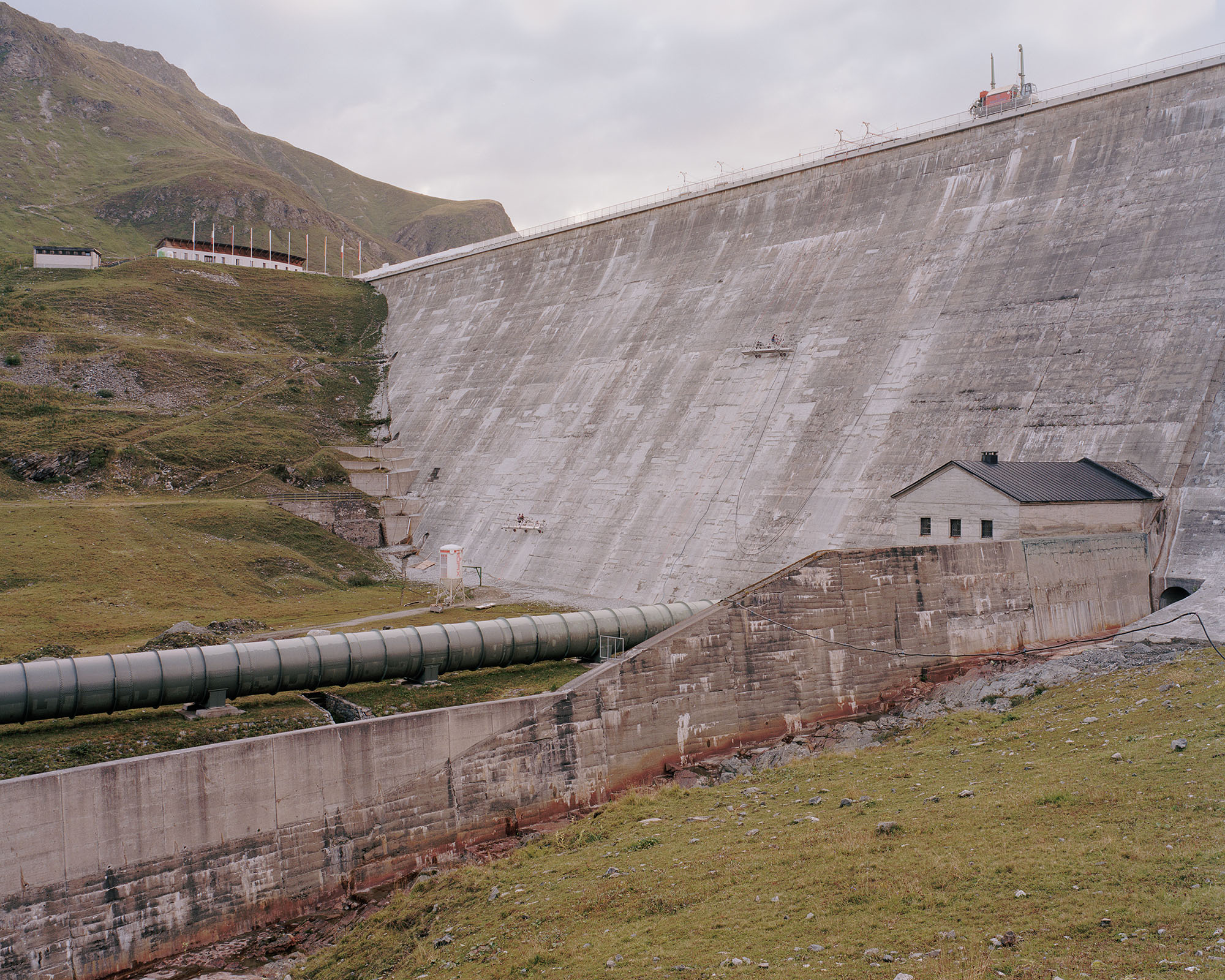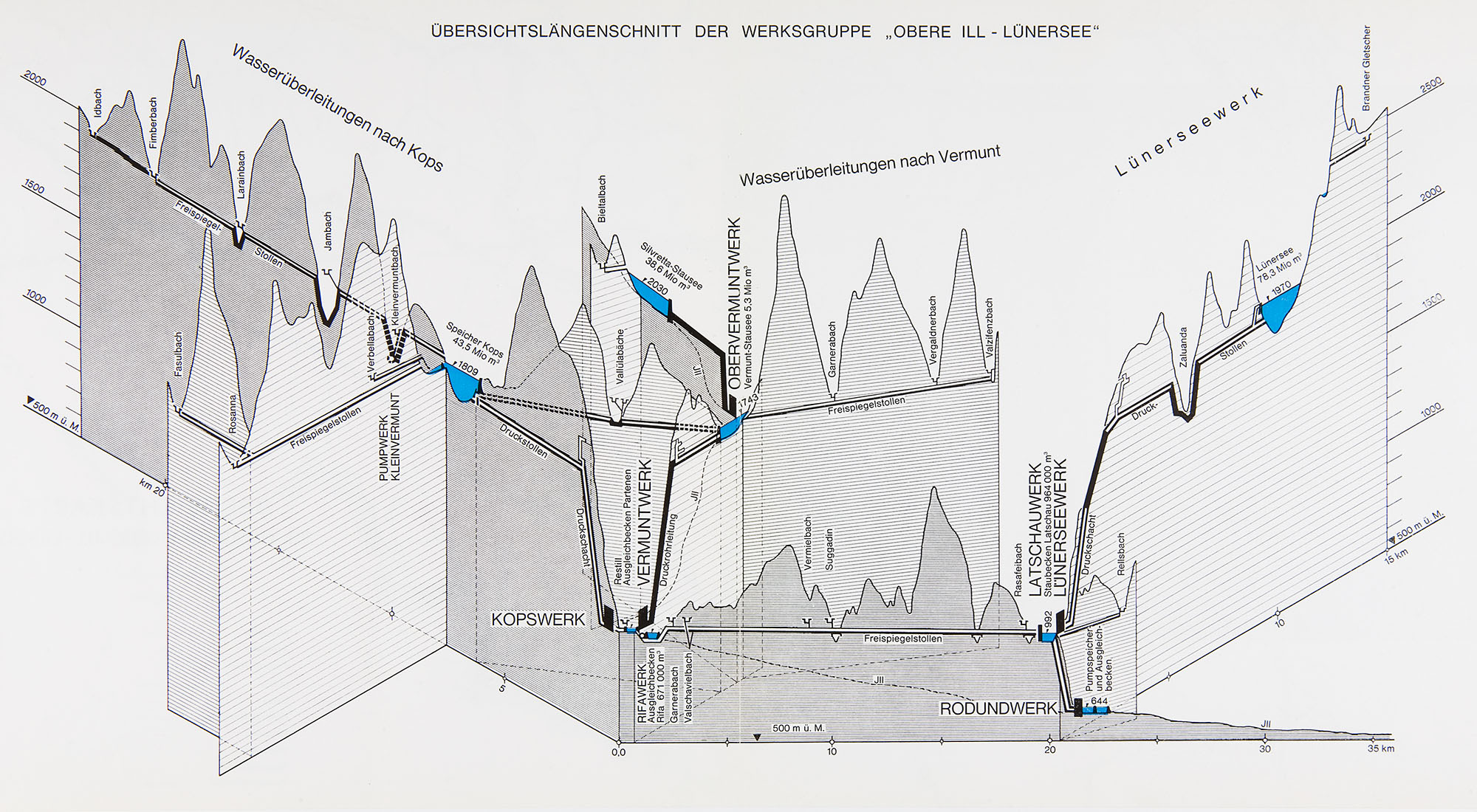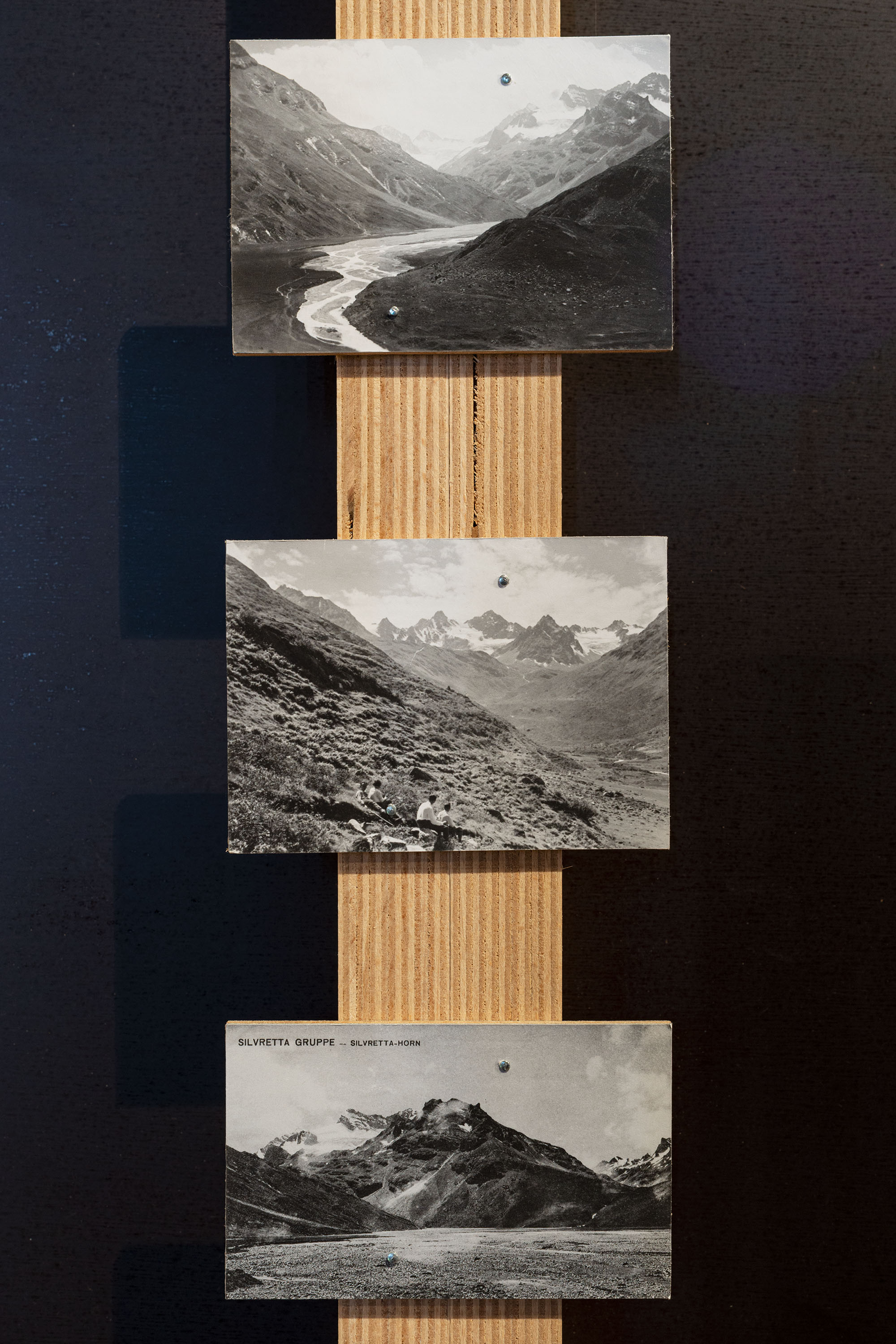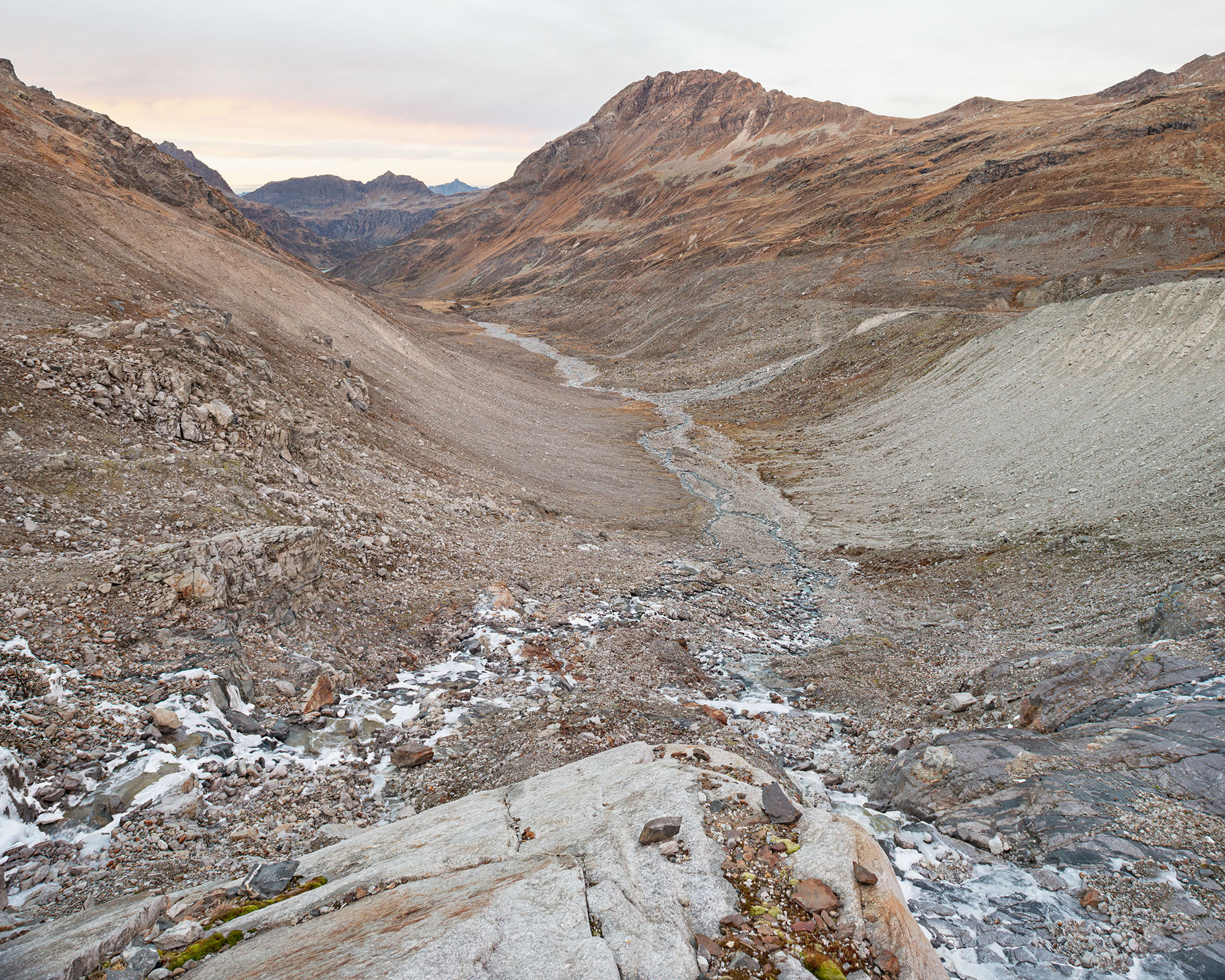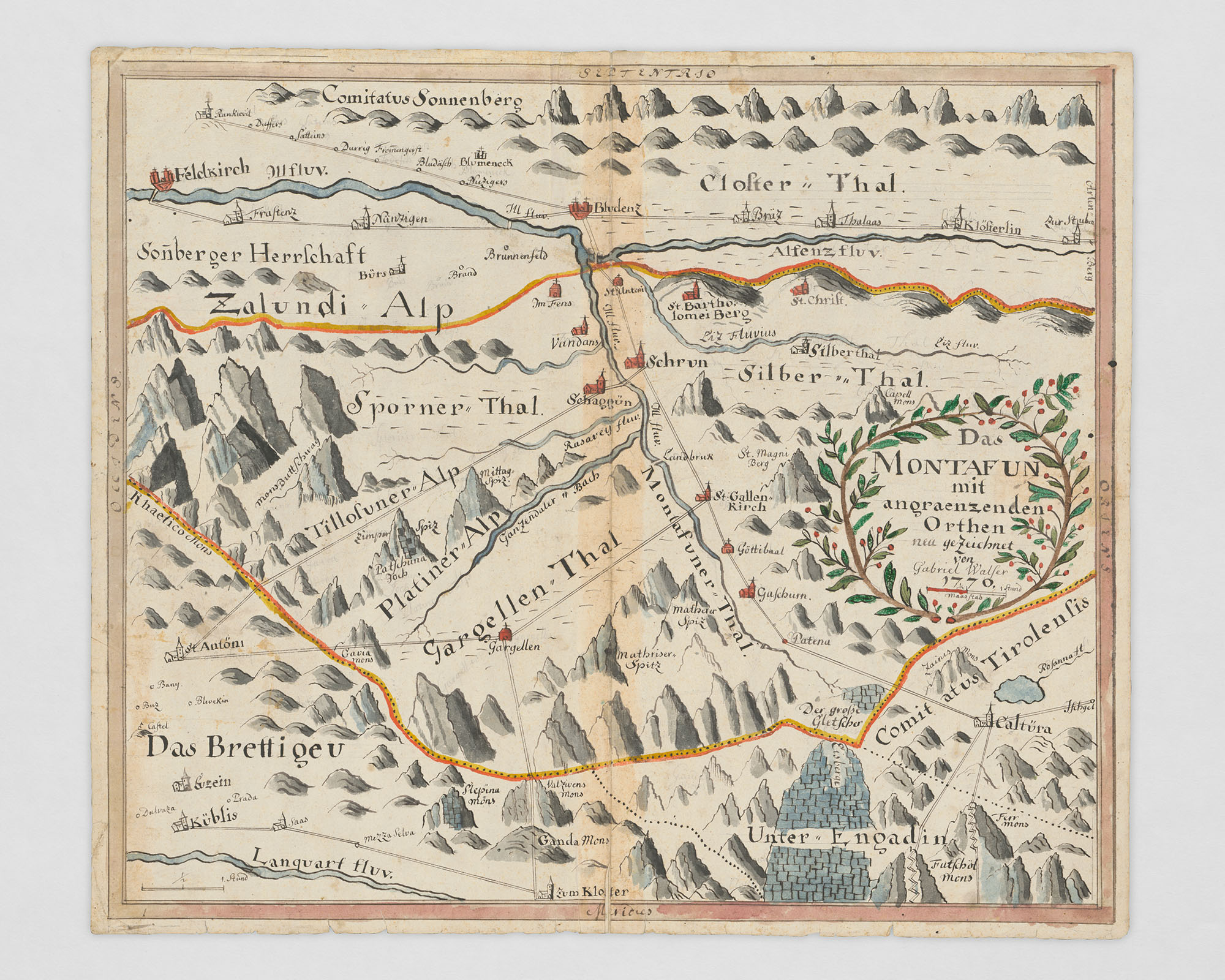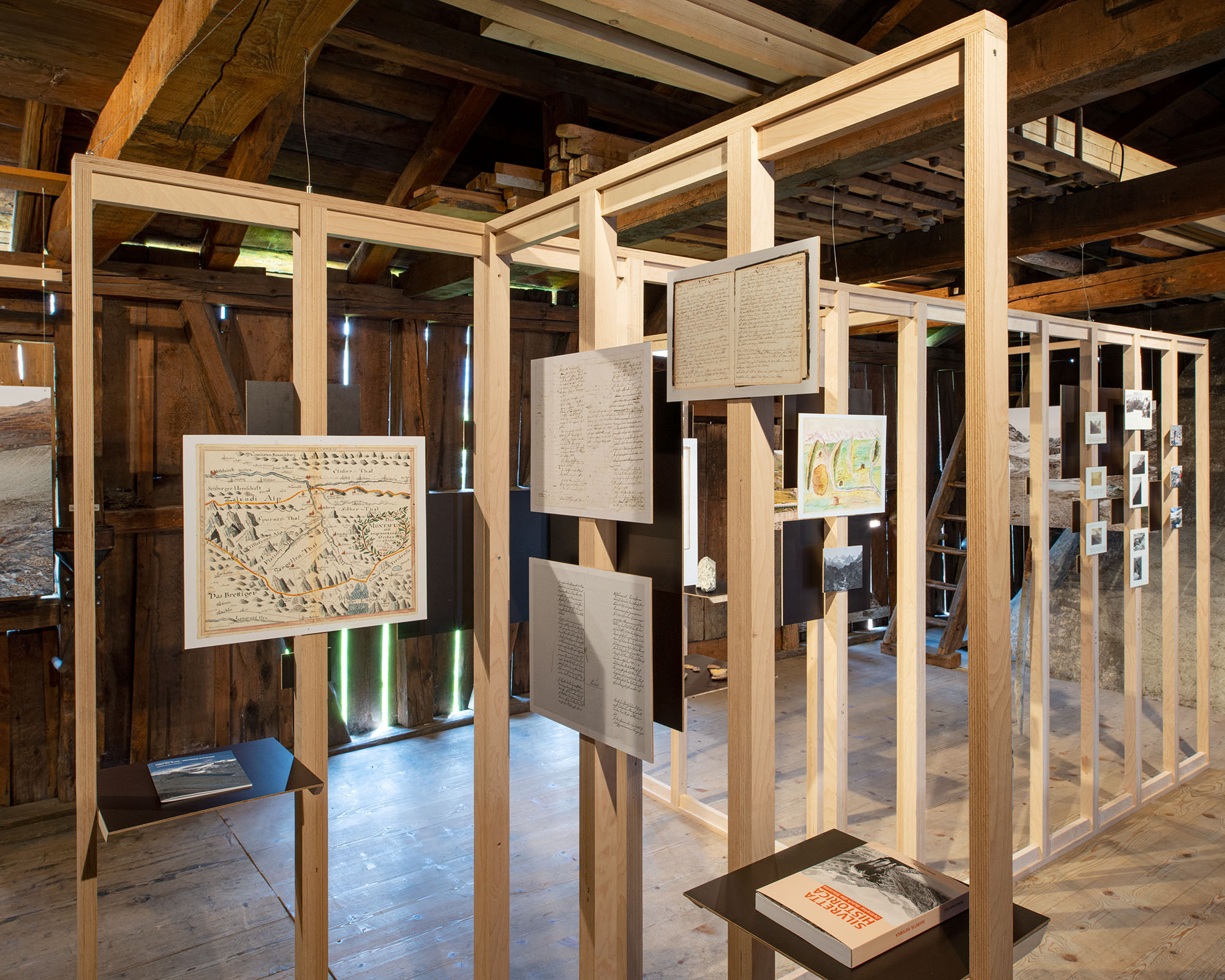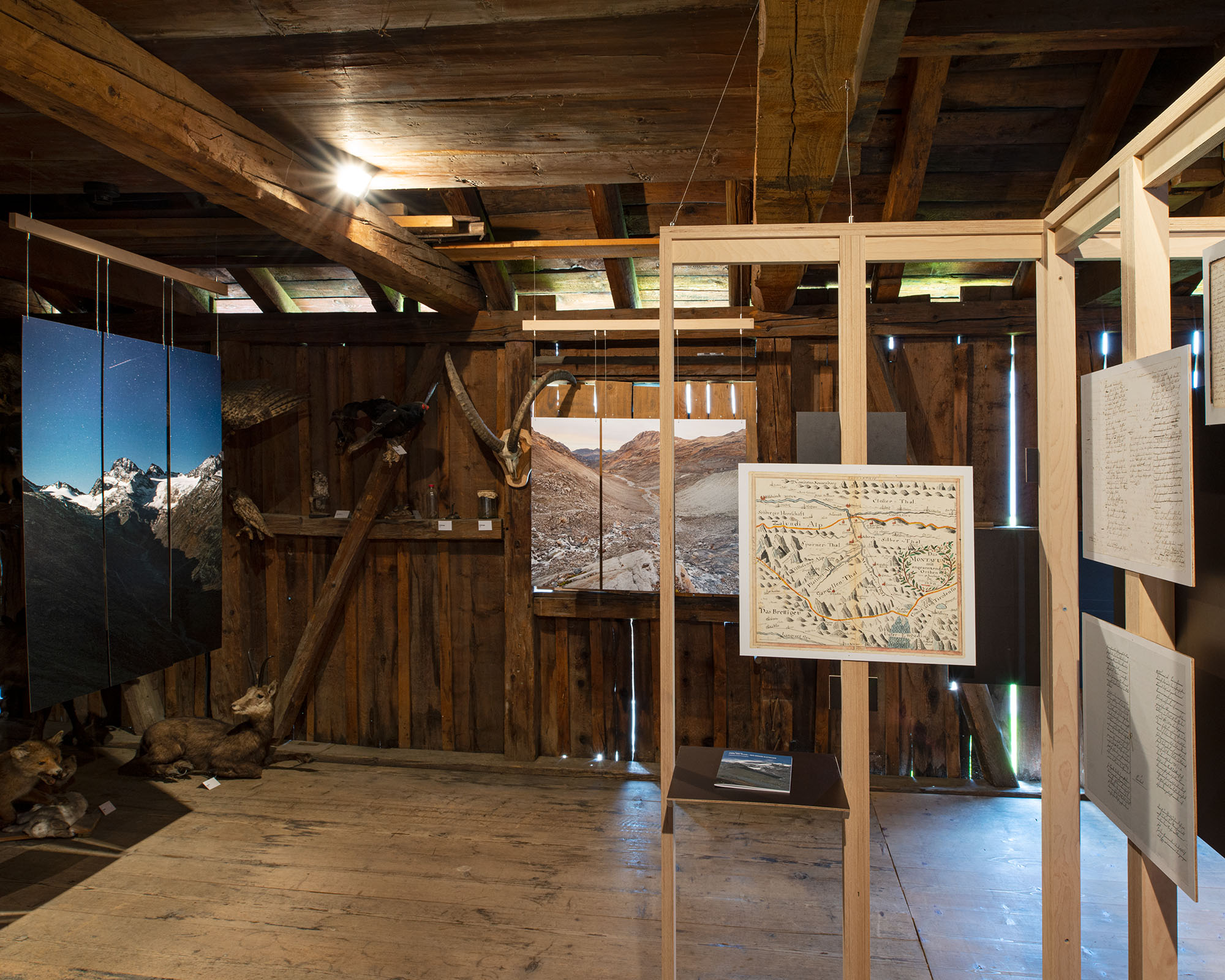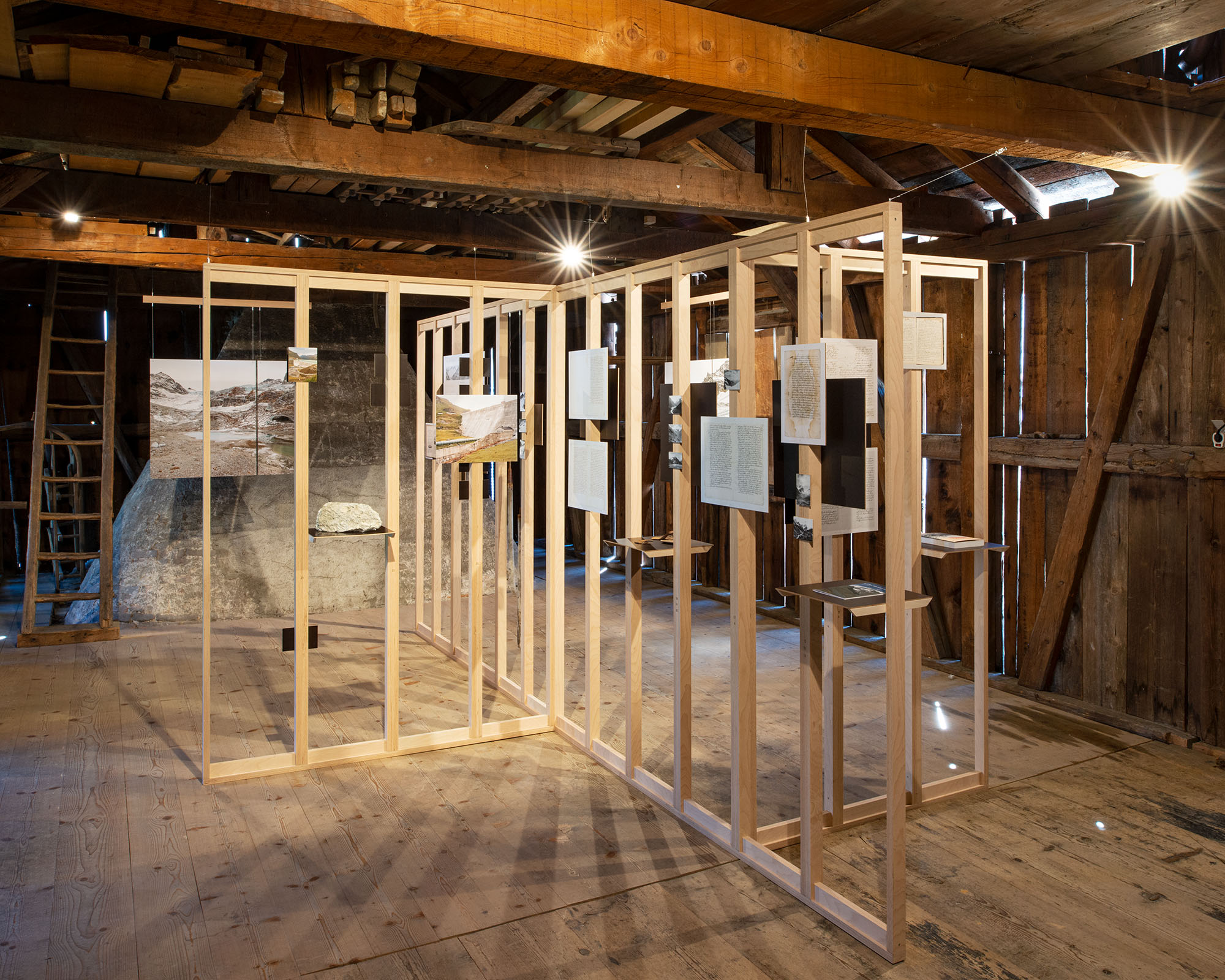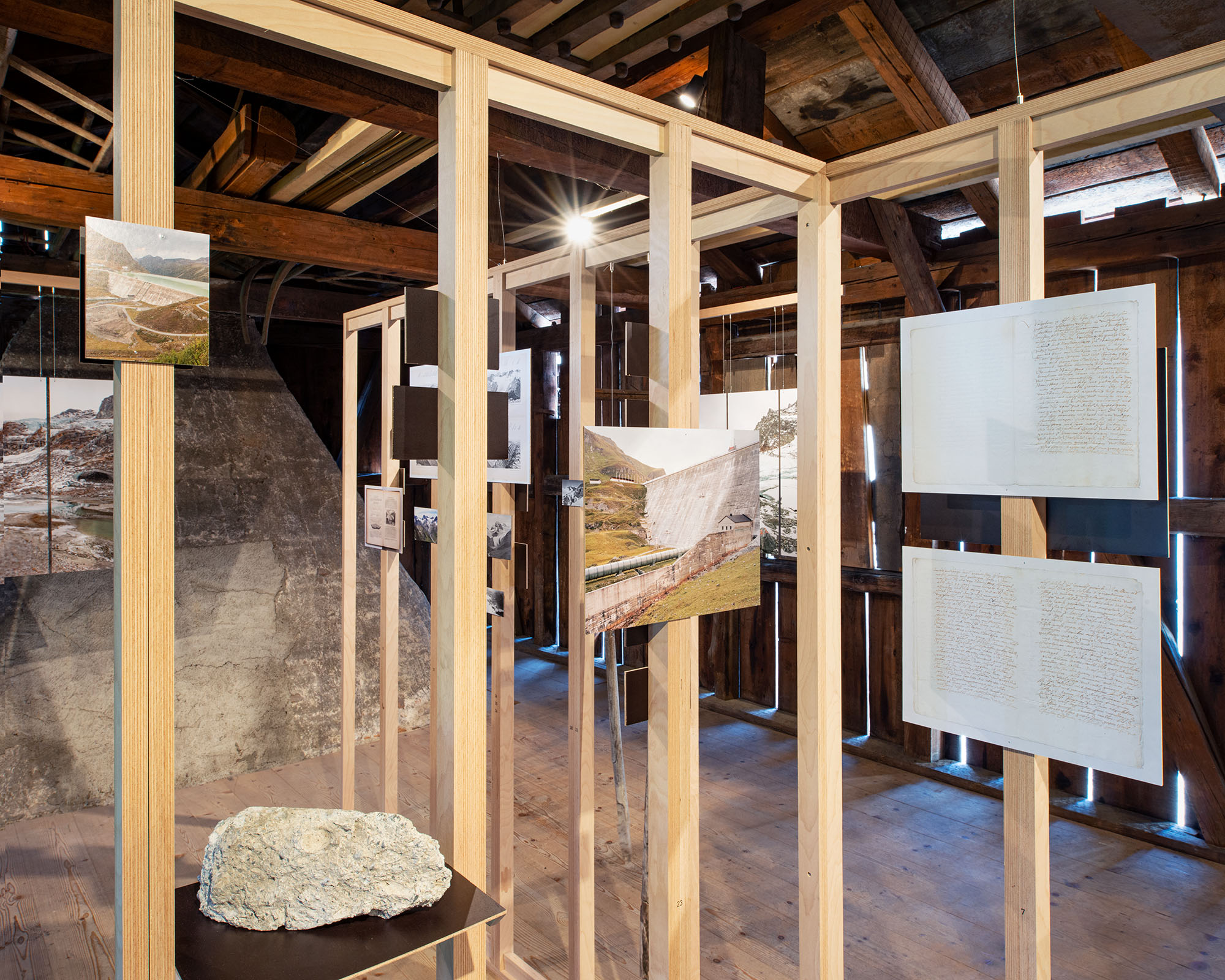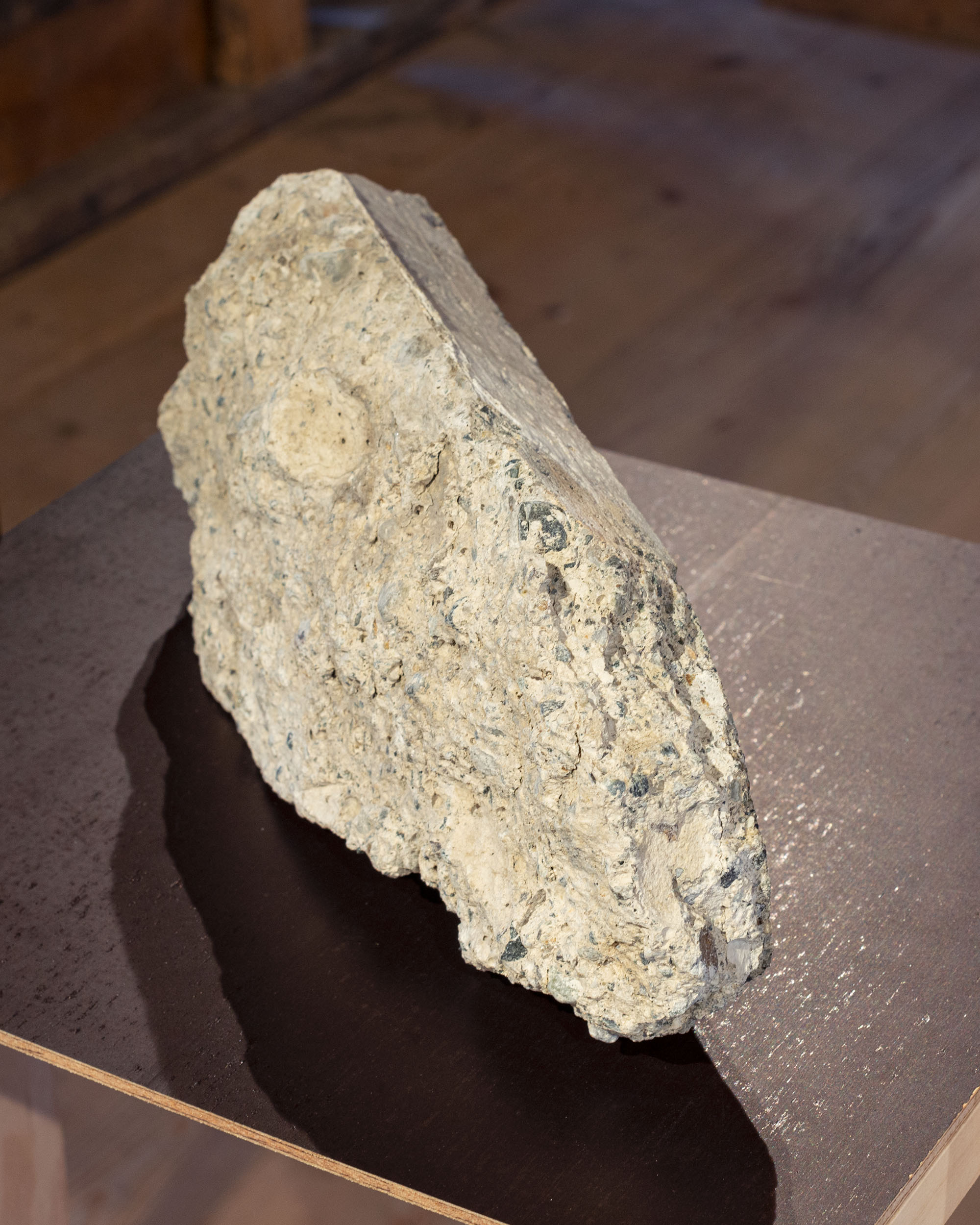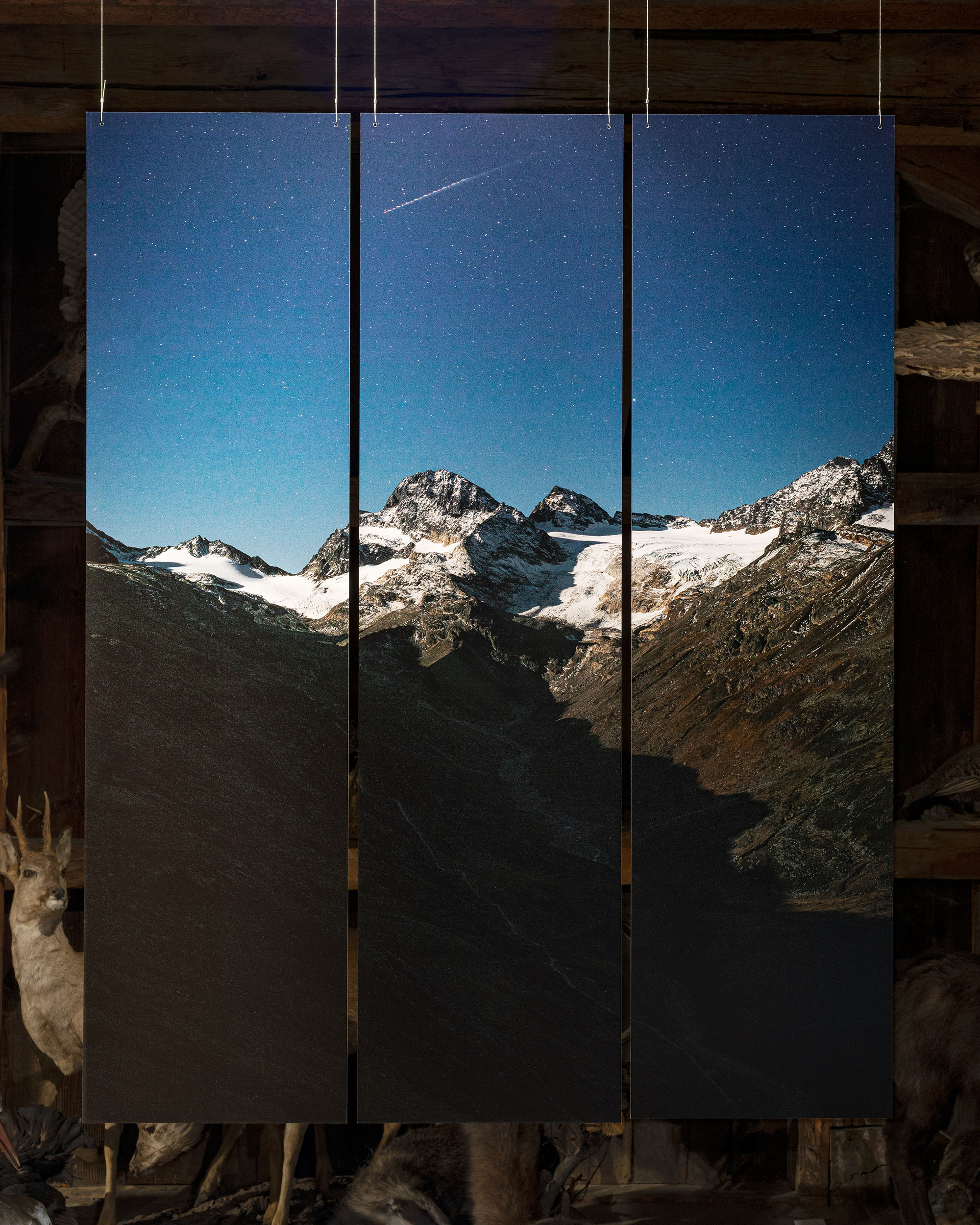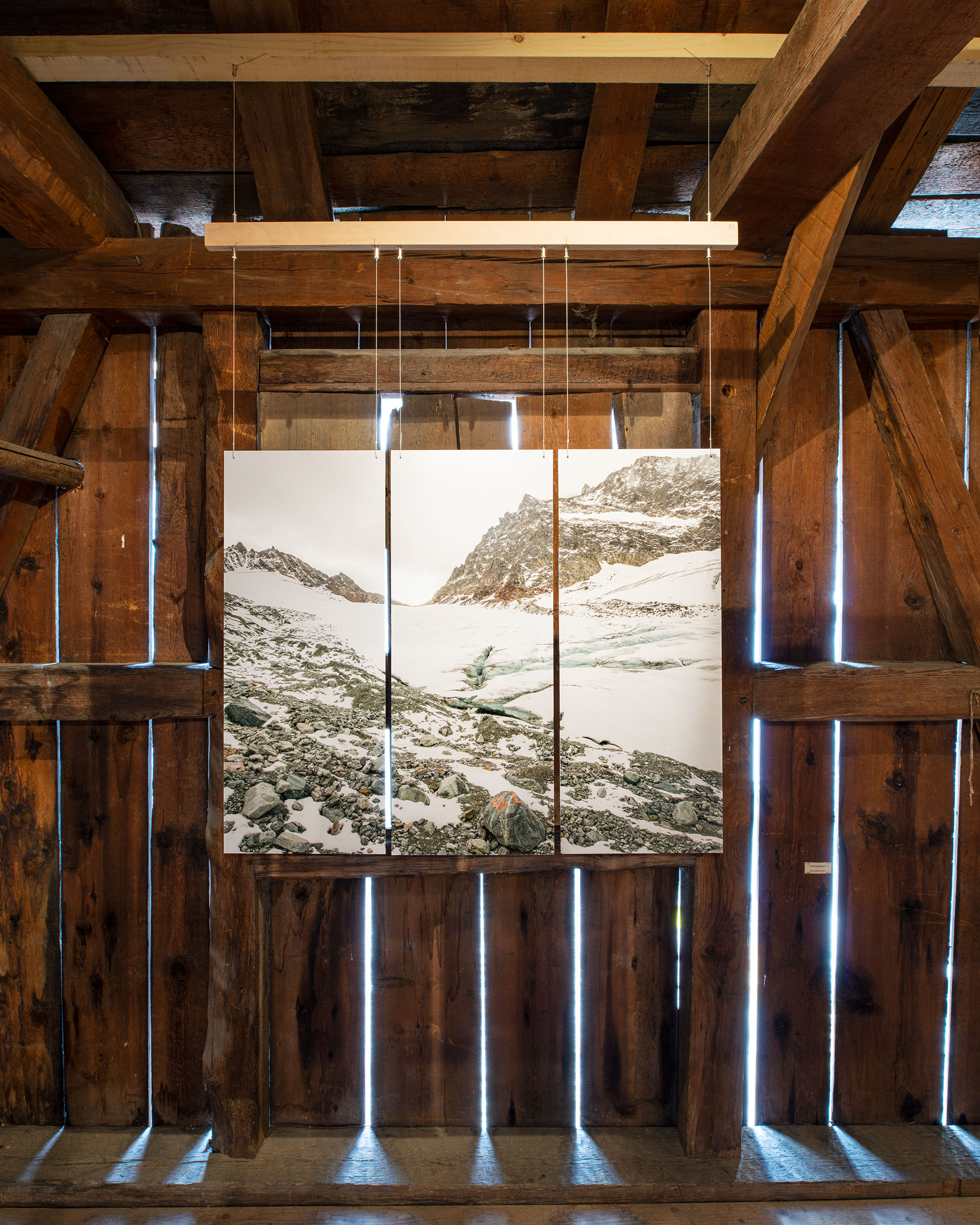The case study reflects on the relationship of humans and nature by investigating the history of glaciers in the Silvretta group at the borders of Tyrol, Vorarlberg (AT) and Graubünden (CH) while focussing on the Little Ice Age (15th-19th century), 20th century’s industrialisation of landscapes and contemporary effects of human-made climate change.
The region has been inhabited by different ethnic, religious, and cultural communities for centuries, who coexisted long before modern concepts of states and borders were established. The scarce environment of the high alpine made agricultural use of even remote territories crucial and fostered trade and exchange across the main ridge of the Alps.
A selection of historical manuscripts, maps, and visual representations aims to trace how natural climate change and the related extension of glaciers affected communities during the Little Ice Age. Among the first documents mentioning the glaciers are court files concerned with conflicts between villages from Tyrol and Graubünden that were obstructed in their traditional use of mountain passes and agricultural land, which increased concurrence.
The contested pastures were located on Austrian territory but traditionally belonged to Swiss villages. Some parts have meanwhile disappeared under artificial lakes created by the hydropower industry. The related construction of mountain roads has made traditional connections between the valleys obsolete while facilitating access to Alpine destinations for broad audiences.
Since their Little Ice Age maximum, all glaciers of the region have receded dramatically and have often broken into smaller, separate entities. So did Vermuntferner and Ochsentaler Gletscher featured in my photographs from 2021.
These images complement the selection of historical texts, visuals, and objects that illustrate the glaciers‘ long history of transit zones in between cultural landscapes and life-threatening wilderness.
Glaciologist Günther Groß has invested fifty years of his life in monitoring the developments of these glaciers in almost performative procedures. He might have documented their last extensions before a continuous period of retreat – that will often result in complete disappearance.
Many historical elements of the installation derive from his research and, very often, his private collection. Silvretta Historica (2013) by Dr Michael Kasper (Montafoner Museen) has been another important source of information for this project.
The project developed from an invitation by Roland Haas to contribute to the group show „Vom Schmelzen und Schwinden“ [on melting and waining] at Kunstforum Montafon. In collaboration with Montafoner Museen, a mixed-media installation has been presented at Heimatmuseum Schruns from June 2022 to March 2023 as a satellite venue for the group show.
The case study reflects on the relationship of humans and nature by investigating the history of glaciers in the Silvretta group at the borders of Tyrol, Vorarlberg (AT) and Graubünden (CH) while focussing on the Little Ice Age (15th-19th century), 20th century’s industrialisation of landscapes and contemporary effects of human-made climate change.
The region has been inhabited by different ethnic, religious, and cultural communities for centuries, who coexisted long before modern concepts of states and borders were established. The scarce environment of the high alpine made agricultural use of even remote territories crucial and fostered trade and exchange across the main ridge of the Alps.
A selection of historical manuscripts, maps, and visual representations aims to trace how natural climate change and the related extension of glaciers affected communities during the Little Ice Age. Among the first documents mentioning the glaciers are court files concerned with conflicts between villages from Tyrol and Graubünden that were obstructed in their traditional use of mountain passes and agricultural land, which increased concurrence.
The contested pastures were located on Austrian territory …


